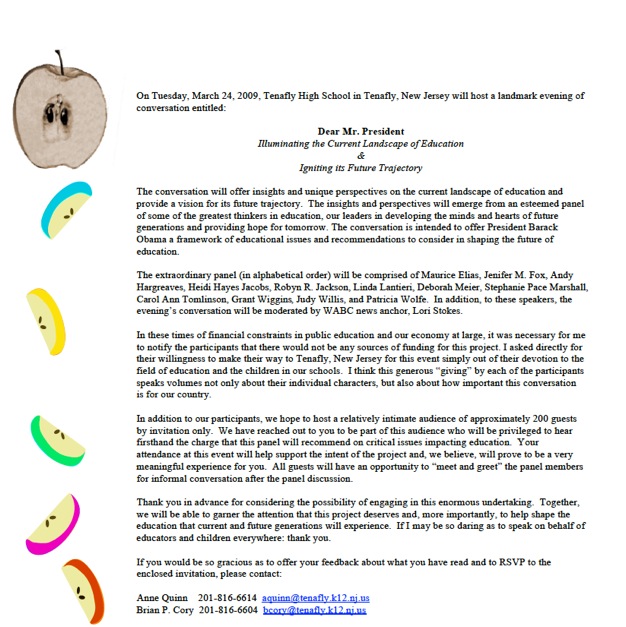Ten Critical Points
1. Students in the U.S. need new skills for the coming century, not to be superior to students worldwide, but to be ready to collaborate with others on a global level to find creative solutions to problems now and in the future.
2. The current curriculum focus on memorizing isolated facts to pass standardized tests is inadequate preparation for the current time and the future. New information is being discovered and disseminated at a logarithmic rate and the facts as students learn them today may not be fully accurate or complete in the near future. Students need to know how to find accurate information and use critical analysis to assess the veracity/bias and current/potential uses of new information. These are the executive functions students need to develop and practice in school today, or they will be unprepared to find, analyze, and use the information of tomorrow.
3. In a global world of collaboration communication and tolerance (openness) to unfamiliar cultures and ideas will be the educational currency for the jobs and problems of the future. School needs to provide opportunities for collaboration and communication - first in the classroom and then beyond to develop these skills.
4. “The person who does not make any mistakes does not usually make anything." William Connor Magee. Nothing new or innovative is achieved without taking risks, making and testing predictions, and welcoming challenge. Assessment must go beyond standardized testing of rote memory and isolated facts so classrooms can become places of inquiry, student-centered discussions, making and testing predictions (hypotheses) with strong systems of support so students are willing to risk making mistakes as they construct knowledge.
5. Beyond differentiation to individualization. “Lower the Barriers, Not the Bar” Children are born with brains that want to learn and with different strengths and intelligences that can best empower their success. Students grow best through their strengths. Discovering their strengths and engaging in learning through interests stimulates the strongest neural circuits so the brain is preset for engagement and knowledge building. One size does not fit all in assessment and instruction. The current testing system and the curriculum that it has spawned is unidirectional and leaves behind the majority of students who do not do their best with the linear, sequential instruction.
6. Inspiration and engagement open the brain’s information filters to accept sensory input. In the absence of these qualities at the beginning of a unit of instruction the brain, at an unconscious level, does not admit the input that is not determined valuable to survival (personal relevance - right here and right now determines what gets through the brain’s first sensory intake filter). Planning with the goal in mind is neuro-logical.
7. React or Reflect? Unless stress is reduced sensory input from the environment goes to the reactive brain where the only “choices” at this unconscious level are fight, flight, or freeze. Stressors to the brain are not just imminent danger – the brain reacts to frustration and boredom through the involuntary, unthinking networks so input does not reach the higher reflective, cognitive, conscious brain.
8. New “learning” does not become permanent memory unless there is repeated stimulation of the new memory neural pathways. Students need to use what they learn repeatedly and in different, personally meaningful ways for short-term memory to become permanent knowledge that can be retrieved and used in the future.
9. Teach students (and educators) the Brain Owner’s Manual. The most important manual students and educators can read is the owner’s manual to their own brain. When we understand how our brains take in and store information, we hold the keys to operating our brains most successfully. Understanding that they can change their own brains and intelligence (neuroplasticity) builds students’ resilience and willingness to persevere through challenge and even failure.
Teaching is not brain surgery. It’s Harder. When teachers receive the recognition, status, and more of the autonomy I receive as a neurologist, we will attract the best and brightest to teaching and keep professional educators longer than the current five year average.
